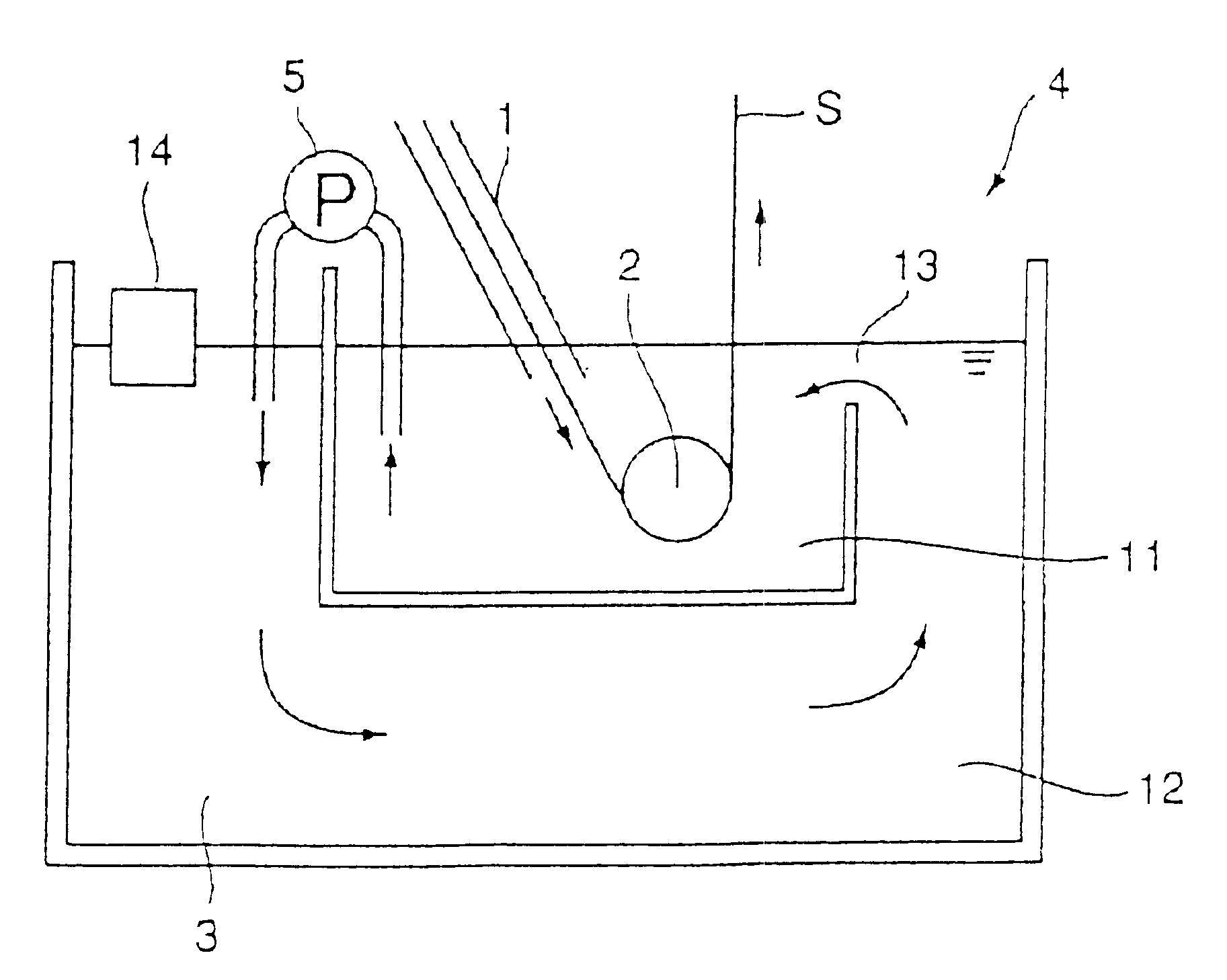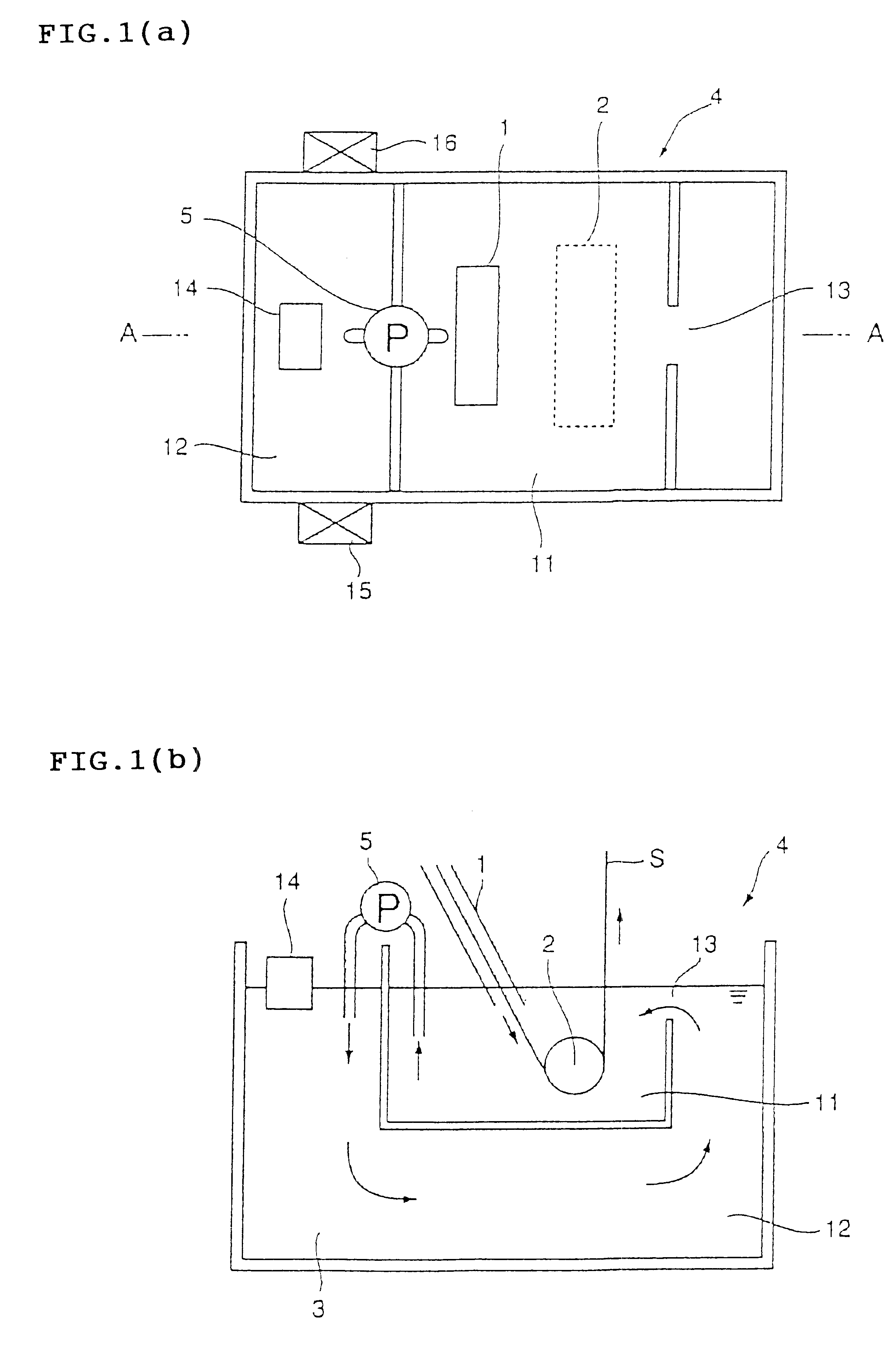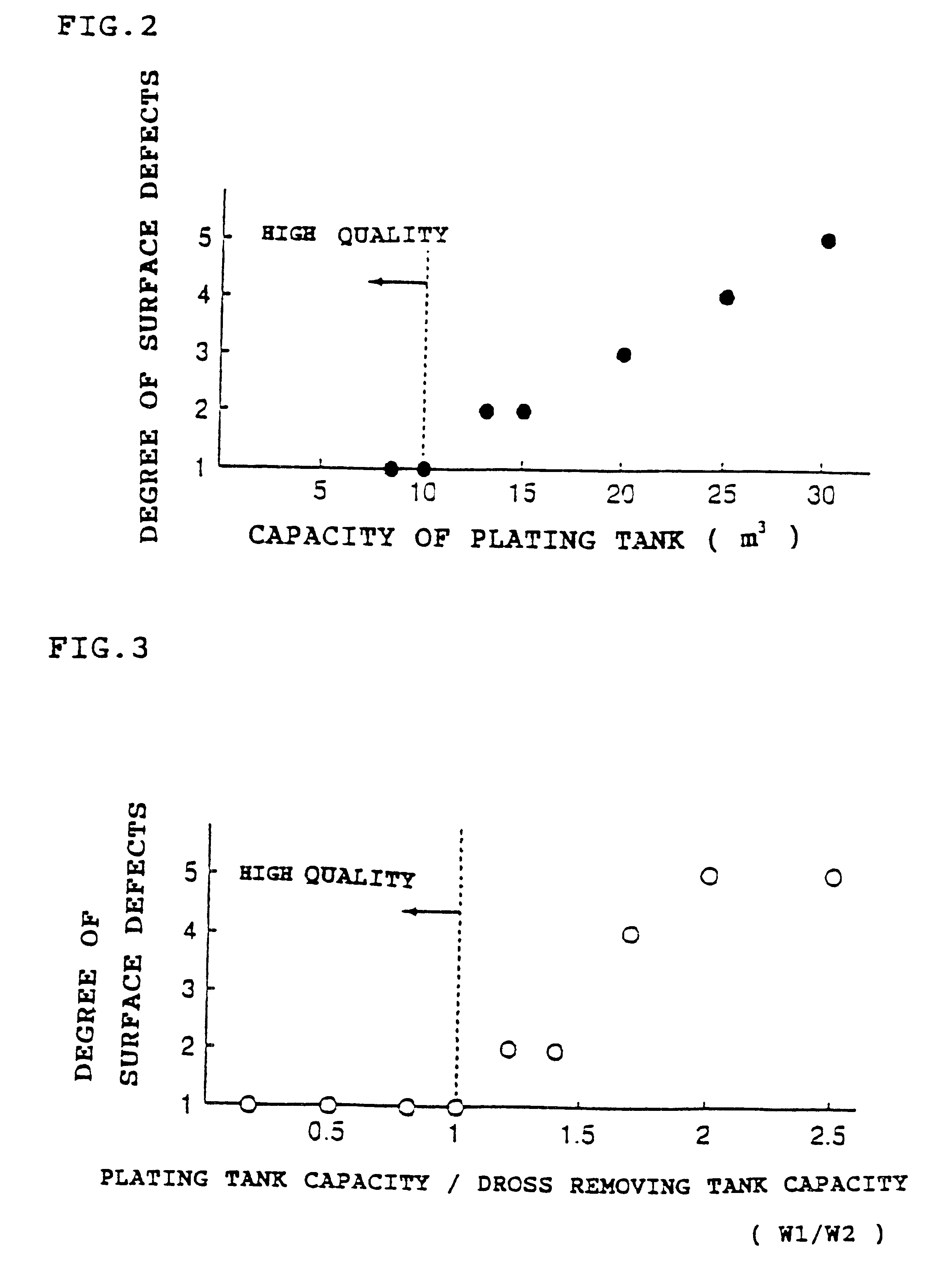Method for hot-dip galvanizing
a technology of hot-dip galvanizing and hot-dip galvanizing powder, which is applied in the direction of hot-dipping/immersion process, metal material coating process, coating, etc., can solve the problems of degrading quality, increasing the index, and affecting the quality of the produ
- Summary
- Abstract
- Description
- Claims
- Application Information
AI Technical Summary
Problems solved by technology
Method used
Image
Examples
example 1
Example 1 used the apparatus shown in FIG. 10. The plating vessel 104 had 2.5 meters in depth. The plating tank 111 had 10 m.sup.3 in capacity, and the dross removing tank 112 had 30 m.sup.3 in capacity. The dross sedimentation speed which raises problem in ordinary hot-dip galvanizing is around 1 meter per hour. Since the depth of the plating vessel 104 was 2.5 meters, the dross removing tank 112 required 2.5 hours or longer retention time. If the circulation flow rate is not more than 12 m.sup.3 / h, the retention time exceeds 2.5 hours, which expects the dross removal effect. On the other hand, if the circulation flow rate becomes below 1 m.sup.3 / h, the dross in the plating tank 111 remains in the plating tank 111 to cause the generation of quality defects. Considering the above-described conditions, the circulation flow rate was selected to 5 m.sup.3 / h.
The apparatus was used to conduct the hot-dip galvanizing to a steel strip. The generation of dross defects on the plated steel...
example 2
Example 2 used the apparatus shown in FIG. 15. The plating vessel 104 and the plating tank 111 had the same capacities and dimensions as those of Example 1. The hot-dip galvanizing to a steel strip was conducted at a fixed melt circulation flow rate of 5 m.sup.3 / h, which was the same as Example 1. The generation of dross defects on the plated steel strip became zero, compared with around 2% of defect generation in conventional production line. Thus, the problem of dross adherence was completely solved. As a result, the steel strip traveling speed could be increased from conventional level of 100 m / min to 140 m / min.
According to the Best Mode 2, the amount of dross generated during the hot-dip galvanizing on steel strip is reduced, the once-generated dross is prevented from deposition in the plating tank, and the dross is efficiently removed in the dross removing tank located below the plating tank. In addition, since the melt flows with very little flow resistance, there appears ver...
seventh embodiment
The seventh embodiment is the apparatus for hot-dip galvanizing described in either the fifth embodiment or the sixth embodiment, which apparatus is characterized in that the plating zone has a molten metal bath capacity of W1, and the dross removing zone has a molten metal bath capacity of W2, wherein W1 / W2 is in a range of from 0.2 to 5.
PUM
| Property | Measurement | Unit |
|---|---|---|
| hydraulic diameter | aaaaa | aaaaa |
| circulation flow rate | aaaaa | aaaaa |
| diameters | aaaaa | aaaaa |
Abstract
Description
Claims
Application Information
 Login to View More
Login to View More - R&D
- Intellectual Property
- Life Sciences
- Materials
- Tech Scout
- Unparalleled Data Quality
- Higher Quality Content
- 60% Fewer Hallucinations
Browse by: Latest US Patents, China's latest patents, Technical Efficacy Thesaurus, Application Domain, Technology Topic, Popular Technical Reports.
© 2025 PatSnap. All rights reserved.Legal|Privacy policy|Modern Slavery Act Transparency Statement|Sitemap|About US| Contact US: help@patsnap.com



